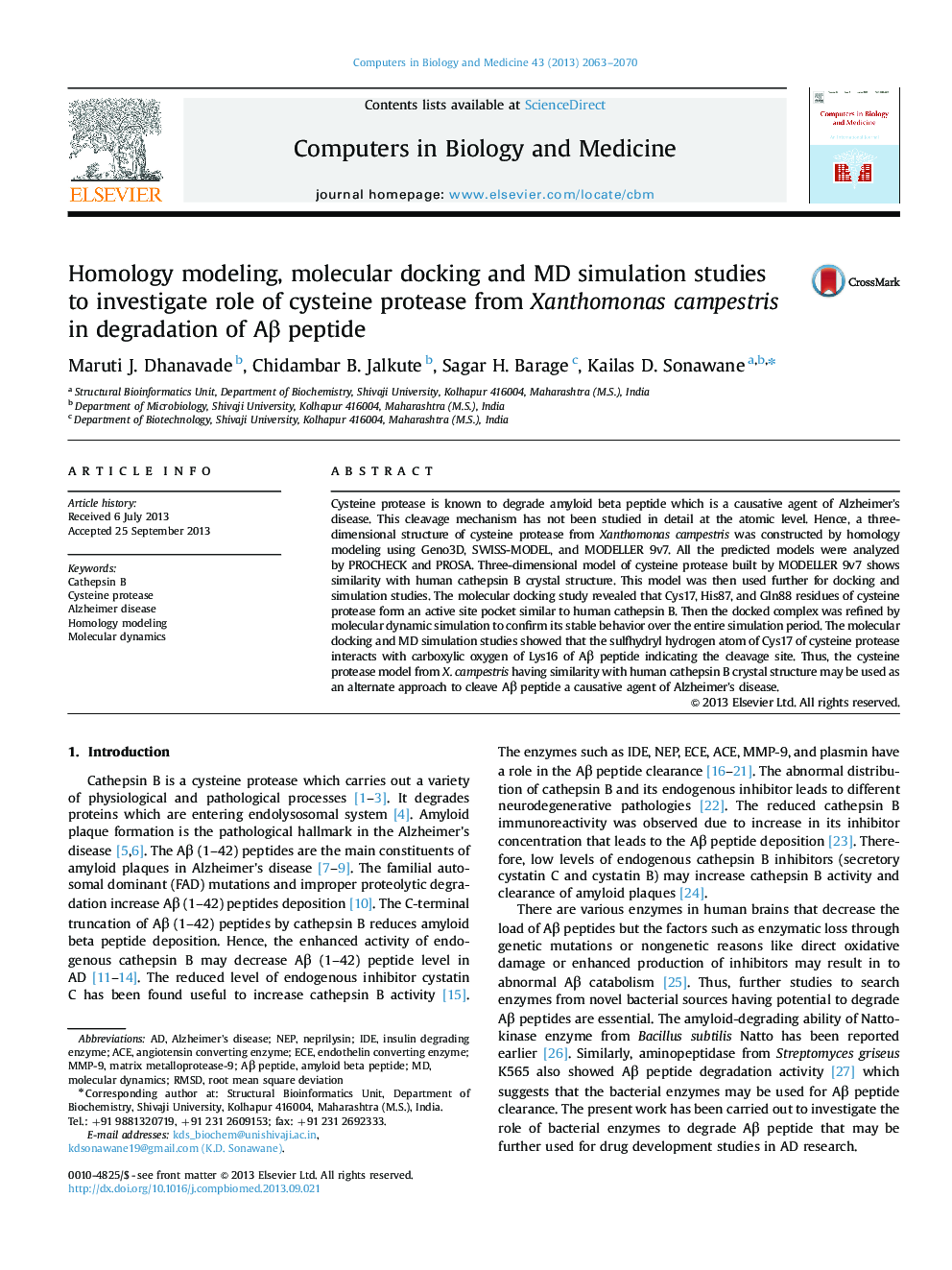| Article ID | Journal | Published Year | Pages | File Type |
|---|---|---|---|---|
| 505058 | Computers in Biology and Medicine | 2013 | 8 Pages |
Cysteine protease is known to degrade amyloid beta peptide which is a causative agent of Alzheimer's disease. This cleavage mechanism has not been studied in detail at the atomic level. Hence, a three-dimensional structure of cysteine protease from Xanthomonas campestris was constructed by homology modeling using Geno3D, SWISS-MODEL, and MODELLER 9v7. All the predicted models were analyzed by PROCHECK and PROSA. Three-dimensional model of cysteine protease built by MODELLER 9v7 shows similarity with human cathepsin B crystal structure. This model was then used further for docking and simulation studies. The molecular docking study revealed that Cys17, His87, and Gln88 residues of cysteine protease form an active site pocket similar to human cathepsin B. Then the docked complex was refined by molecular dynamic simulation to confirm its stable behavior over the entire simulation period. The molecular docking and MD simulation studies showed that the sulfhydryl hydrogen atom of Cys17 of cysteine protease interacts with carboxylic oxygen of Lys16 of Aβ peptide indicating the cleavage site. Thus, the cysteine protease model from X. campestris having similarity with human cathepsin B crystal structure may be used as an alternate approach to cleave Aβ peptide a causative agent of Alzheimer's disease.
